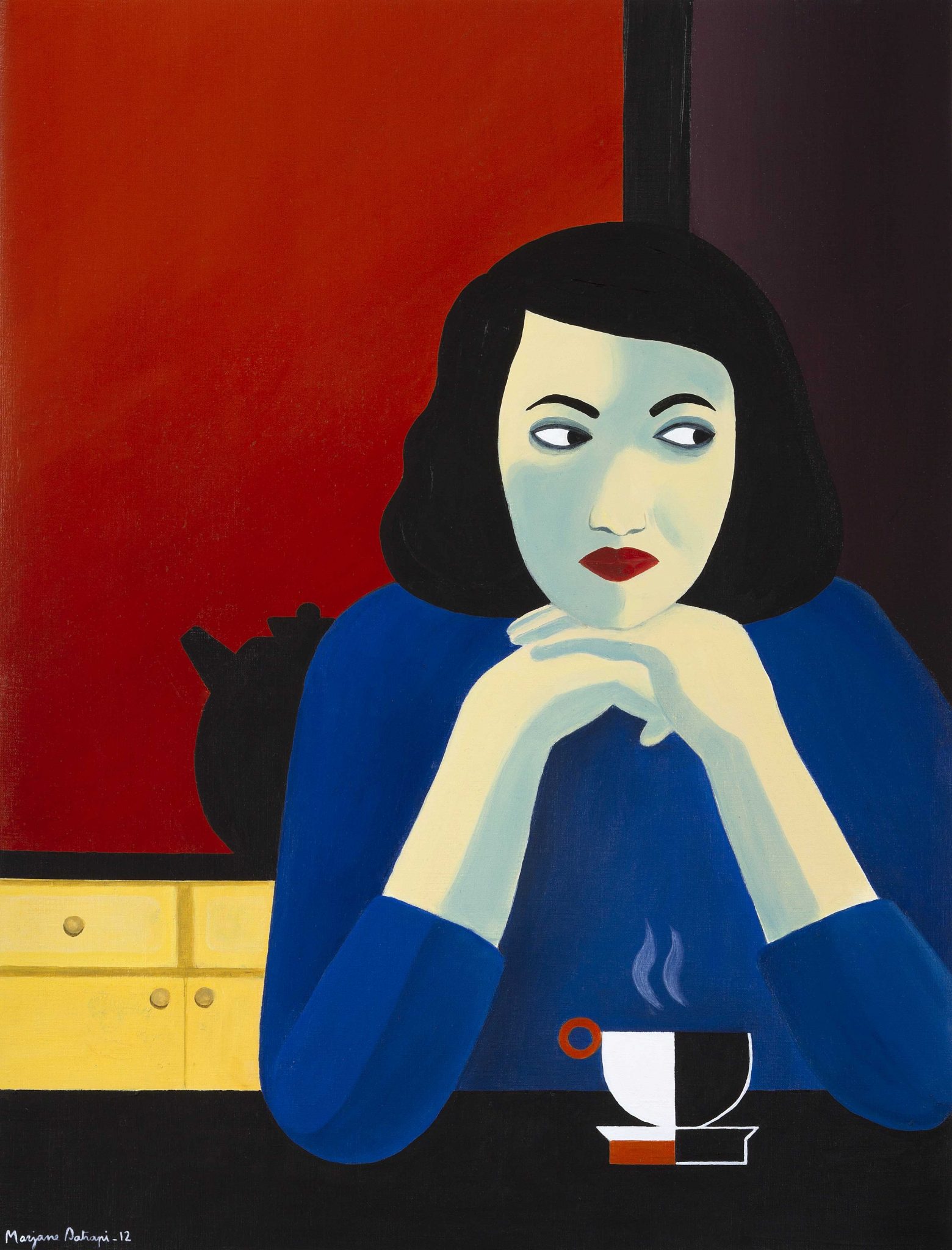A much-publicised introduction to the contemporary art market after the critical and commercial success of her autobiographical graphic novels Persepolis (2000–3) and Chicken with Plums (2004) – and their later film adaptations with codirector Vincent Paronnaud, in 2007 and 2011 respectively – Marjane Satrapi’s first solo show presents a series of 21 medium-to-small- scale acrylic portraits (all untitled, and dated from 2009 to 2012). Just a week before the early February release in theatres of her third movie, La Bande des Jotas (2012), in which she also plays the lead role, all her paintings sold like hotcakes.
Contrasting with the basic black-and- white design of her previous comic strips, which offered a vivid and circumstantiated portrayal of the many family heroes the Iranian-born French artist recollected as a child before and after the 1979 revolution, each of her paintings depicts in
various solid and deep colours one, two or four nameless and close-lipped Persian-looking women caught in the midst of seemingly casual activities. Indeed the very simplified outline of the backgrounds, when not wholly abstracted into Mondrian-like geometric wallpaper, alludes lightly to the domestic sphere (just a cup and a teapot to figure a kitchen, for example, or a book and an armchair to imply a living room).
Although Satrapi confesses that the features of the female characters were drawn after family relatives (her grandmother, her great aunt and their cousins), their identities and feats are not here the topic for discussion, nor is a feminist cause: ‘I painted women for the same reasons Modigliani or Gauguin did,’ she says in the exhibition catalogue. Therefore, since no speech bubble actually pops up in the canvases to share these ladies’ inner thoughts, any thrills must not be expected from one of the renowned author’s family anecdotes, but rather found within the compositions themselves.
Satrapi uses pictorial means that superficially resemble Matisse’s boldness of colours, or – why not, to blow hot air – Gauguin’s cloisonnism (his contoured areas of plain colours); either way masters that she mentions with Mondrian and Balthus as great sources of inspiration. Yet it soon appears that the only degree of nuance and possible originality in the otherwise flat colouring of her paintings is that which systematically affects the faces of the mute women and especially highlights the expression of their eyes. Consequently, whether introspective or alert, it is the very direction of their gazes that animates the compositions and stirs one’s curiosity.
Within the series, 12 portraits delineate a single woman, six a duo, and three a group of four. In the first case, the characters systematically look out of the corner of their eyes, pointing to the outside of the frame and extending the mystery to unseen scenery. In the second case, the two women give each other a conniving sidelong look. In the third case, which is conceived like a family portrait, eyes never meet: the first woman stares at the second, who stares at the third, who stares at the fourth, who breaks the circle by looking straight out of the canvas, towards the viewer.
In the exhibition catalogue, Satrapi quotes a line of Diderot from his review of the 1763 Paris Salon: ‘When writing, should one write everything? When painting, should one paint everything? Please, have the grace to leave something for my imagination to fill.’ Let’s just agree here that his expressed wish is hard to top.
This article was first published in the May 2013 issue.
